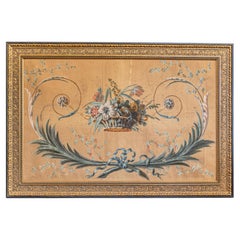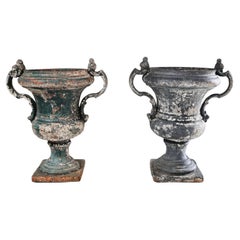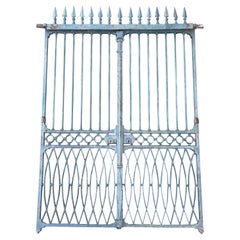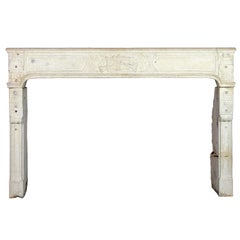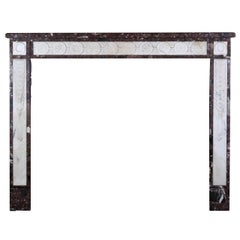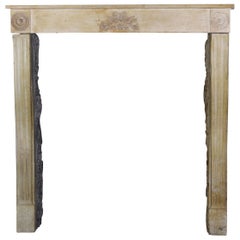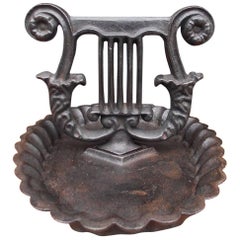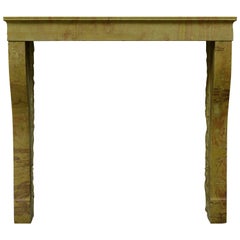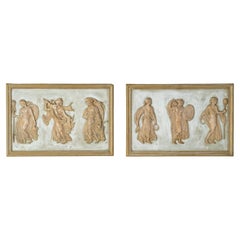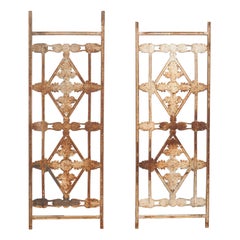Directoire Architectural Elements
Formed in the wake of the Jacobin Reign of Terror’s bloody guillotine, the Directoire was established to lead France into order through the leadership of a five-member council of directors. It was brief, lasting only from 1795 to 1799, ending with Napoléon Bonaparte’s coup d’état, and was economically tumultuous. Yet it was an essential bridge between the era of Louis XVI and the elaborate Empire style that followed, with Directoire furniture and decorative arts shaped by a royal passion for classical design and an enthusiasm for postrevolutionary France.
Much of the country’s furniture production had halted during the French Revolution when the furniture guilds system was abolished, but during the Directoire period, the cabinetmakers restarted their businesses, such as François-Honoré-Georges and Jacob-Desmalter who established a new workshop called Jacob-Frères. Pieces made in walnut, elm, mahogany and other inexpensive materials incorporated influences ranging from Egypt to Pompeii, with popular forms including the curule armchair based on an ancient Roman design. The aesthetics of the transitional style were more austere than during the monarchy, with court cabinetmaker Jean-Baptiste Sené, for instance, reimagining his workshop’s neoclassical-style furniture with ungilded surfaces and a reduction of ornamentation.
Symbols referencing the revolutionary tenets of liberty, equality and fraternity were frequently carved into Directoire furnishings, such as the Phrygian cap, clasped hands and the fasces, which is an image of a bound bundle of sticks adopted from the Roman Republic, where it was seen as an emblem of strength through unity.
Elements of the French Directoire style continued through Empire style. Designers Charles Percier and Pierre-François-Léonard Fontaine are credited today as major proponents of both movements. The classically inspired furniture design is represented in pieces such as the boat-shaped daybed and the klismos chair, which endured in French interiors as well as in styles abroad, including American Directoire.
Find a collection of antique Directoire chairs, tables, daybeds, decorative objects and other furniture on 1stDibs.
Late 18th Century French Antique Directoire Architectural Elements
Wood, Paint
This exceptional pair of antique French cast iron vases originates from the heart of Paris, France. Crafted during the Directoire period (1770–1790), these urns showcase the elegance and craftsmanship of the era. The beautiful patina adorning the cast iron speaks to their historical authenticity. These timeless antiques are a testament to both functional design and aesthetic appeal from a celebrated period in European history.
The Rich Heritage of Antique UrnsThroughout history, antique urns and vases have been cherished across Europe for their exquisite craftsmanship and multifaceted functionality. Often serving as symbols of status and artistry, they were used to adorn gardens, courtyards, and stately homes. Made by skilled artisans, these pieces combined durability with intricate design, ensuring they could withstand the elements while remaining visually captivating. Today, their historical value and timeless appeal make them sought-after garden antiques.
Transforming Spaces with Antique UrnsThese antique garden planters...
18th Century French Antique Directoire Architectural Elements
Iron
Early 19th Century French Antique Directoire Architectural Elements
Wrought Iron
Late 18th Century French Antique Directoire Architectural Elements
Limestone
Late 18th Century French Antique Directoire Architectural Elements
Marble, Statuary Marble
Late 18th Century French Antique Directoire Architectural Elements
Stone
Late 18th Century French Antique Directoire Architectural Elements
Stone
Early 19th Century French Antique Directoire Architectural Elements
Stone
Early 19th Century French Antique Directoire Architectural Elements
Stone
Late 18th Century French Antique Directoire Architectural Elements
Marble, Brass
Late 18th Century French Antique Directoire Architectural Elements
Paint, Plaster, Wood
1820s American Antique Directoire Architectural Elements
Iron
19th Century French Antique Directoire Architectural Elements
Limestone
2010s Australian Directoire Architectural Elements
Aluminum
20th Century French Directoire Architectural Elements
Ceramic
19th Century Spanish Antique Directoire Architectural Elements
Iron
19th Century French Antique Directoire Architectural Elements
Wood
1890s English Antique Directoire Architectural Elements
Wrought Iron
Early 19th Century European Antique Directoire Architectural Elements
Sandstone
19th Century Antique Directoire Architectural Elements
Wood
19th Century French Antique Directoire Architectural Elements
Limestone
19th Century Antique Directoire Architectural Elements
Iron
Late 19th Century European Antique Directoire Architectural Elements
Wrought Iron
Late 18th Century French Antique Directoire Architectural Elements
Stucco
Early 1800s French Antique Directoire Architectural Elements
Iron
Early 1800s French Antique Directoire Architectural Elements
Wood
Late 18th Century French Antique Directoire Architectural Elements
Stone
Late 18th Century French Antique Directoire Architectural Elements
Early 20th Century French Directoire Architectural Elements
Iron
